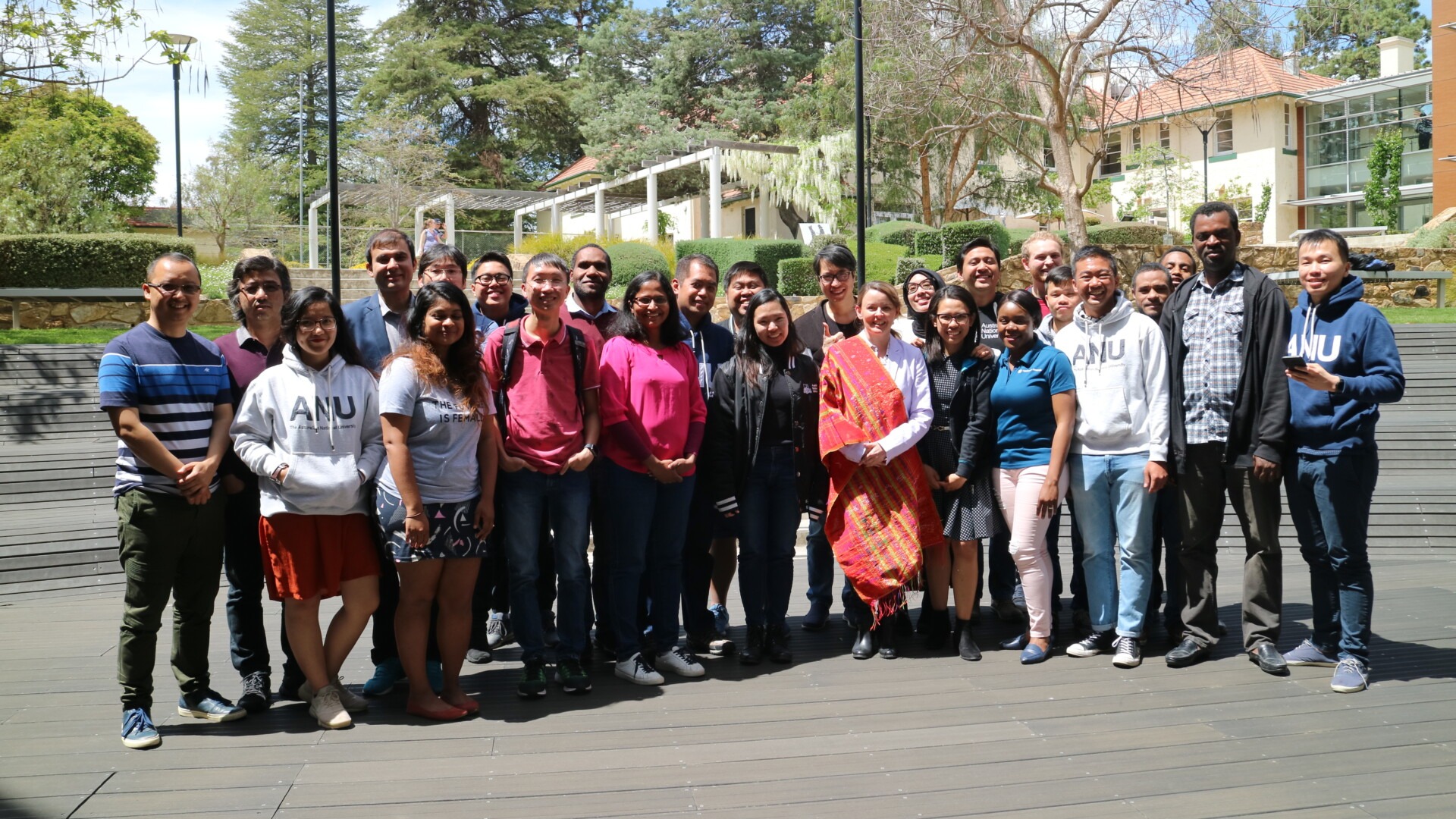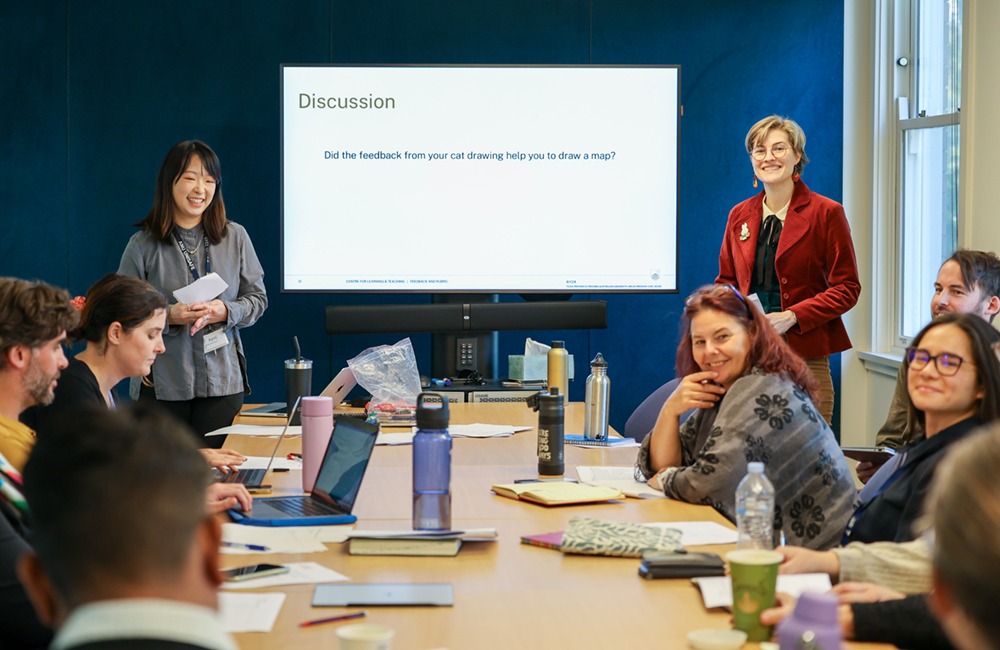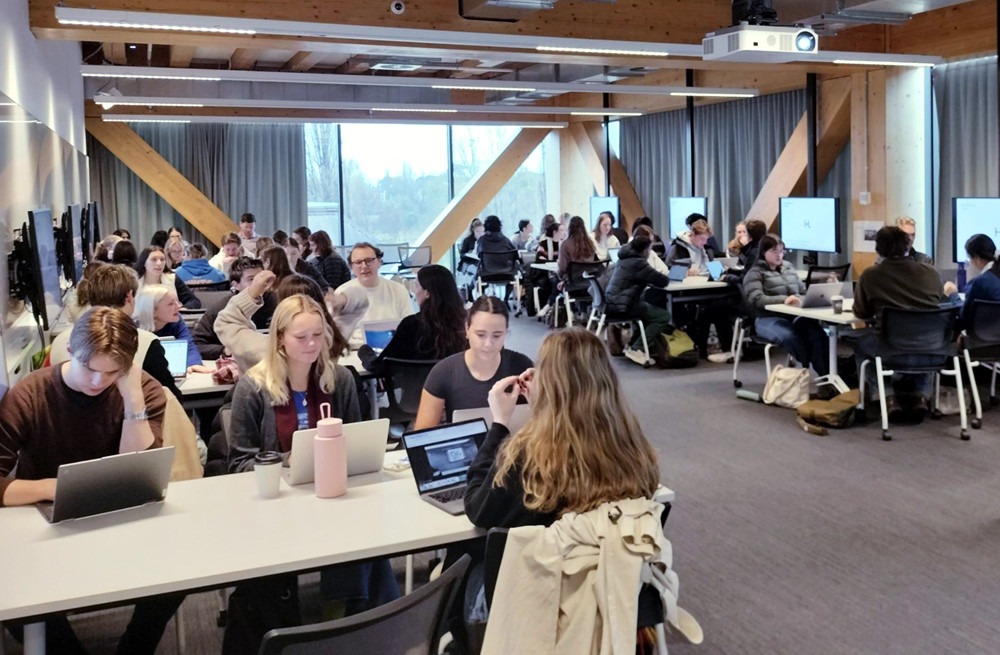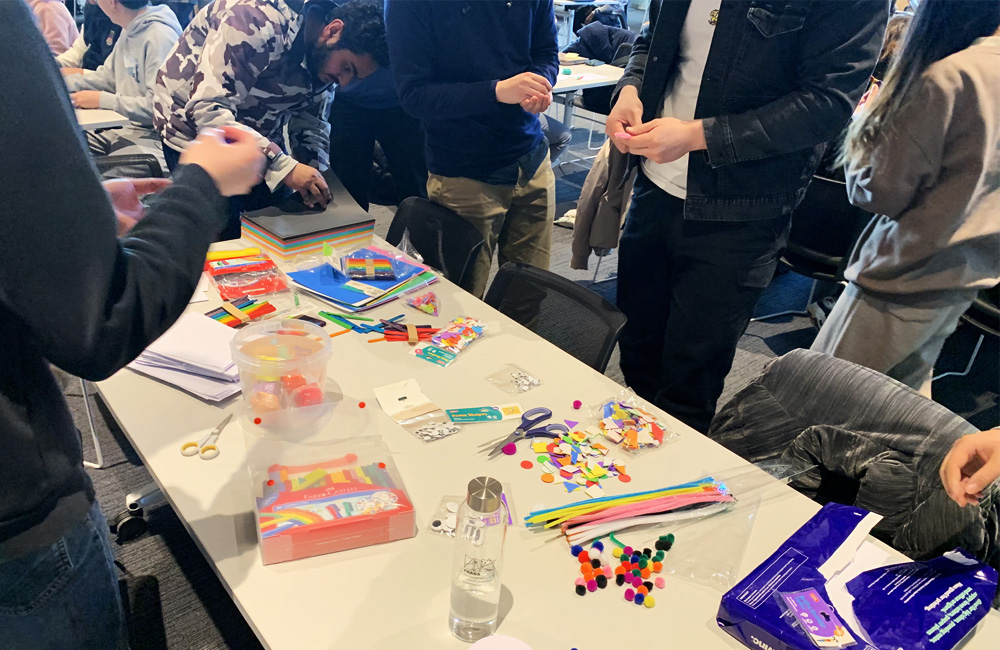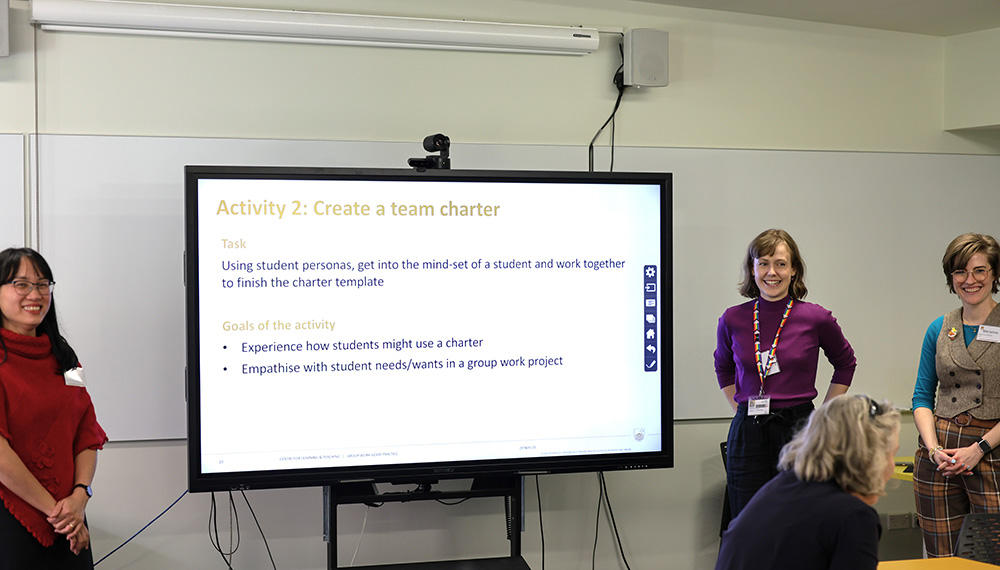As someone who has an auditory processing disorder (APD) which is invisible, I can struggle to hear, then reinterpret and respond with clarity in a timely manner, especially in fast verbal conversations. As I’ve struggled with this condition all my life I’ve learnt that often the problem is minimalised and dismissed by others, so it occurred to me that some tips about how to be more inclusive within a lecture, tutorial, lab or meeting this semester may be useful for educators.
At a recent CECC workshop about Neurodiversity and Disability, I raised APD as an issue for me. Then one of the other attendees, who speaks multiple languages, stated that for them communication was a similar but different process. Essentially, for both of us we need more time to think about what was said, to translate the words in our heads, and to then respond. de Zubicaray identified that even the usual way of speaking is a four-step process:
- identifying the intended meaning (of a question/statement/spoken words)
- selecting the right word from the “mental lexicon” (a mental dictionary of the speaker’s vocabulary)
- retrieving its sound pattern (called its “form”)
- executing the movements of the speech organs for articulating the spoken words.
To illustrate the differences, our personal speaking processes follow the paths in the graphic below. Immediately you can see how people with APD or who are multilingual go through many more steps to arrive at an answer to a question.

Figure 1: A graphic in three parts to explain the speaking process for a student fluent in English, a disabled student with auditory processing disorder and a third student who is multilingual.
Long Image Description: The educator asks, “What does X mean?” and the student fluent in English says, “To me it means X+Y+Z. Whilst the student fluent in English responds quickly, the other two students feature in the graphic take noticeably longer. The multilingual student has nine speaking boxes and the disabled student eight. Both students need to listen carefully to the question as the educator has a non-Australian English accent. From here their paths diverge. The multilingual student needs to translate the question from English into their preferred dialect, whilst the disabled student needs to translate the question into a different format, for example, a visual. The multilingual student then thinks about a possible answer whilst the disabled student struggles with a word in the translation which could, for example, be one that can be taken literally. Box four illustrates how the multilingual student struggles with a word in translation whilst the disabled student spends time thinking about an appropriate word for context. Then the disabled student begins to think about a possible answer whilst the multilingual student formats a response in their own dialect. In box seven, the multilingual student is translating their response back into English whilst the disabled student formats a response into words. At step eight the multilingual student is still struggling with a word in translation whilst the disabled student raises their hand ready to respond, which the multilingual student does in step nine.
The additional processing time we need is often not allowed for within work meetings or for students in tutorials or labs. This lack of additional time creates a power imbalance within any setting.
For people with APD or from a multilingual background not being able to respond quickly is like always coming last in a competitive quiz such as Mastermind or Hard Quiz. First in gets the participation marks, when instead, these cohorts have unfairly been left behind in the Equality vs Equity stakes. Often, students with APD or who are multilingual are likely to be viewed as “quiet and shy” when in reality the educator hasn’t allowed sufficient time for them to respond. We need to be aware of the power imbalance that surrounds ableism and racism and that according to the Australian Human Rights Commission they, “exist in systems and institutions that operate in ways that lead to unequal outcomes” – in other words, existing learning and teaching formats privilege those cohorts without points of difference. What’s interesting, is that both racism and ableism are not limited to people’s attitudes and beliefs; they can also be revealed through their actions. Pushing against racism and ableism in course design requires an active process of learning and targeted inclusive action on the part of educators to change the way they’ve always taught.
Another key thing I learnt from my colleagues at the workshop and since from within my own diverse professional team, was that communication also only works if we have a shared understanding of terms being used in the discussion. For people who use multiple languages or who have lived in different nations, meanings of terms can be quite different when cultural lenses are applied which add another level of complexity in the learning and teaching environment.
Providing a written definition of key terms (to students, before class) does not necessarily solve a potential problem as the written word can be interpreted quite differently by everyone. A written definition also denies students the opportunity to share their life experiences and grasp the meaning of a term through our Australian cultural lens.
So, how do you provide the space to ensure that more people feel included?
- Pause between key points when speaking.
- Give students time to translate and absorb what was said.
- Use more headings and subheadings to provide structure to discussions.
- After each key section of information, pause for 30–60 seconds, and then ask if there are any questions.
- Provide more time for students who speak more than one language, or have APD, to answer questions at their own pace, or in alternative formats, such as through writing or video and audio.
- At the beginning of the tutorial or lab each week hold a brief student-led discussion about the key terms to ensure that everyone sees them in the same way for the intended context.
- For terms that arise during tutorials or labs, give students some time to think about what they think the terms mean (perhaps 2-5 minutes).
If you follow a consistent process students will learn they have time to process information, will ask questions and will take the opportunity to do so over time.
Benefits
Implementing these tips changes the learning experience for students.
- It makes them feel included, reduces their stress and motivates them to engage. They feel that their needs are seen rather than ignored, and most importantly feel part of the ANU community.
- It builds cultural exchange which helps to build greater understanding between people and not only helps students with group work within their degree program but also will help students with their work in future workplaces.
- It gives students and staff greater confidence to ask about points of difference in a respectful way.
References
Australian Human Rights Commission, Let’s talk about equality and equity
Australian Human Rights Commission, AHRC National Anti-racism Framework
de Zubicaray, Greig. (2023). Is it normal to forget words while speaking? And when can it spell a problem?
Rickard, Scott. (2022). Celebrating GAAD 2022 with greater inclusion and accessibility, ANU Learning and Teaching Blog
Tomlin, Dani. (2016). Is your child having trouble learning? They may have auditory processing disorder, The Conversation
Dr Scott Rickard identifies as neurodivergent and is the Education Transformation Lead at the ANU School of Computing, College of Engineering, Cybernetics and Computing.
Thanks to Ehsan Mazloomi, Education Technologist, ANU School of Computing for producing the graphic and providing multilingual insights.
